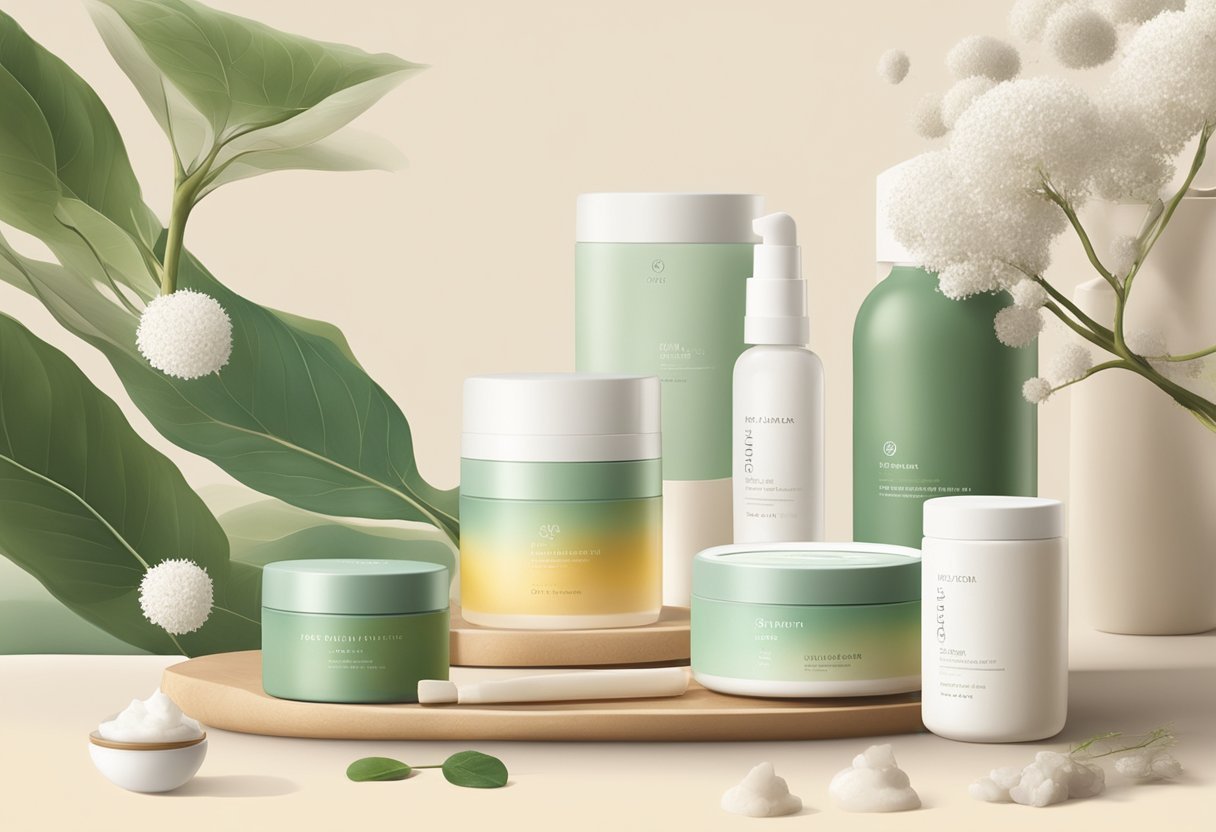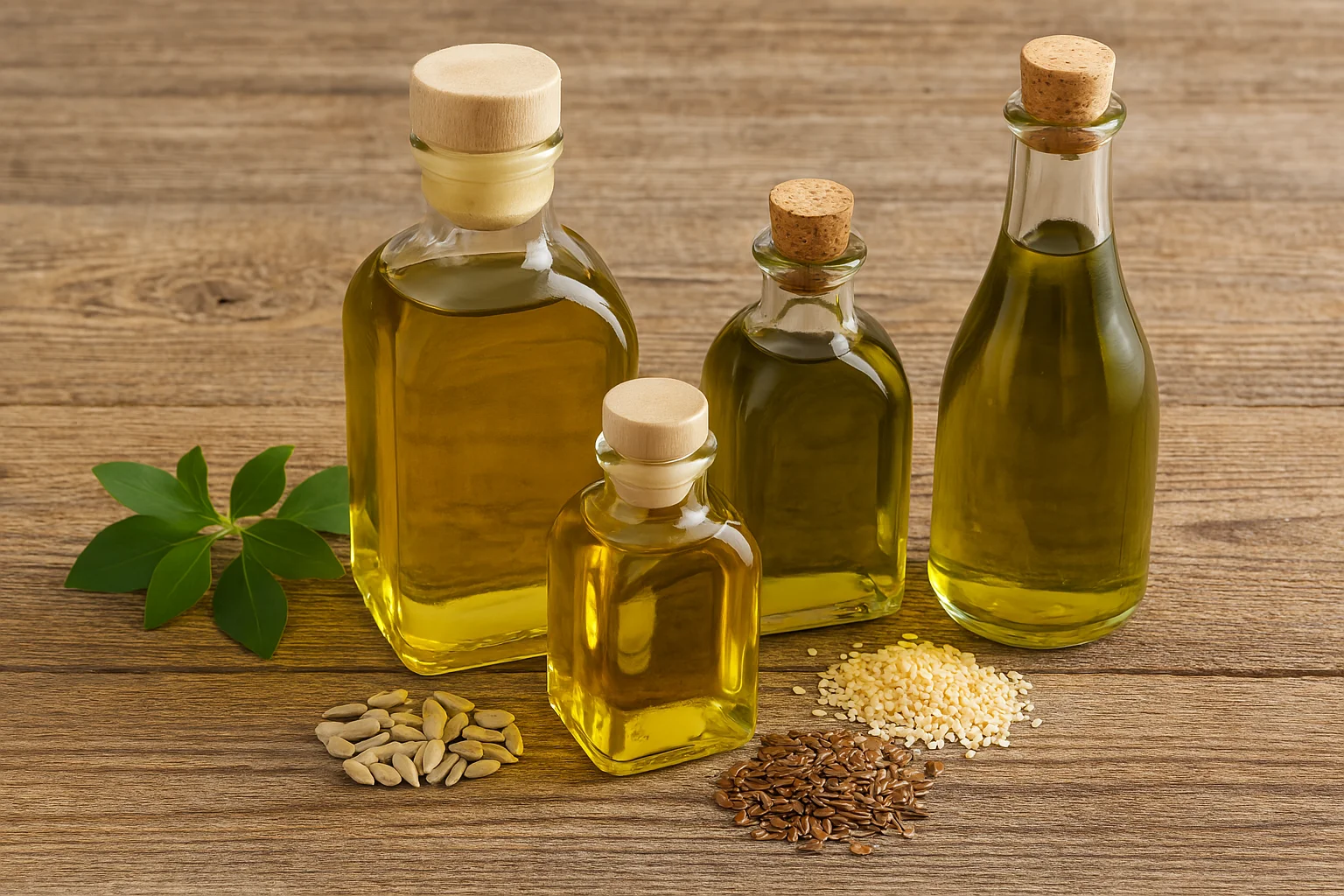The Resurgence of Tallow in Modern Wellness Trends: Ancient Fat Makes a Comeback in Health Practices
May 13, 2025 | by iprittie@gmail.com

Tallow, the rendered fat from cattle, has made a surprising comeback in today’s wellness circles, with many praising its wellness benefits for skin, nutrition, and clean eating. This resurgence reflects a shift back to ancestral diet fats and natural living.
Once a staple in kitchens and medicine cabinets, this traditional fat was largely replaced by vegetable oils during the 20th century. Now, influencers and wellness enthusiasts are rediscovering tallow for both cooking and skincare, claiming benefits that range from improved skin health to better nutrition.

Beef tallow contains fat-soluble vitamins and a fatty acid profile that closely resembles human sebum, making it particularly compatible with skin care applications while also serving as an alternative to processed cooking oils. This ancient ingredient is being marketed as everything from a clean eating staple to a traditional medicine resource with roots in ancient practices.
The tallow trend exists within a broader movement that questions modern food processing and seeks connections to traditional ways of eating and self-care. While enthusiasm grows among certain wellness communities, nutrition experts maintain balanced perspectives about where tallow fits in a healthy lifestyle compared to other fats like olive oil.
Key Takeaways
- Tallow offers a natural alternative to processed skin and food products with a fatty acid profile similar to human skin.
- The resurgence of tallow represents a shift toward traditional wellness practices and whole-food approaches to health.
- Quality and sourcing matter significantly when choosing tallow products for either nutritional or skincare benefits.
Historical Context of Tallow

Tallow has been a valuable resource in human civilization for centuries, serving various purposes from food preparation to medicinal applications. Its journey spans multiple cultures and time periods, with significant shifts in popularity throughout history.
Tallow in Traditional Practices
Across ancient civilizations, tallow held an esteemed position in both daily life and healing traditions. Ancient Ayurveda in India, traditional Chinese medicine, and indigenous healing practices all utilized animal fats for their therapeutic properties.
The Babylonians, Egyptians, Greeks, and Romans incorporated tallow into healing balms, recognizing its effectiveness for skin ailments.
Beef tallow specifically was prized for its stability and nutritional profile. Cultures worldwide used it for:
- Cooking and food preservation
- Medicinal salves and ointments
- Soap making
- Candle production
Its compatibility with human skin made tallow particularly valuable in skincare, with many traditional societies creating simple yet effective treatments.
Decline and Resurgence
The 20th century marked a significant shift in tallow usage. As modern manufacturing advanced, dietary trends and changing health perceptions led to tallow’s decline in mainstream cooking and skincare.
Vegetable oils and synthetic alternatives gradually replaced animal fats in many products. This shift was largely driven by commercial interests and misconceptions about saturated fats.
Recent years have witnessed a revival of interest in tallow. Modern research has begun to validate its biocompatibility with human skin and nutritional benefits.
The renewed appreciation for tallow stems from the growing preference for natural, minimally processed alternatives to synthetic ingredients. Many consumers now seek the timeless elegance and efficacy that traditional animal fats provide.
Tallow in Nutrition

Beef tallow offers a unique nutritional profile that differs significantly from modern cooking oils. Its composition includes both beneficial nutrients and potential health concerns that consumers should understand before incorporating it into their diet.
What Is Beef Tallow Used For in Modern Nutrition?
Many people new to traditional diets ask, “What is beef tallow used for?” — the answer spans cooking, baking, skincare, and even pre-workout energy for keto and carnivore diet followers.
Fatty Acids Profile
Beef tallow contains a mix of saturated and unsaturated fats. About 50% of tallow is saturated fat, which has been associated with raising LDL (“bad”) cholesterol levels. This connection to cholesterol has made tallow controversial in nutrition circles.
However, tallow also contains conjugated linoleic acid (CLA), which some studies suggest may have anti-inflammatory properties. It’s rich in fat-soluble vitamins like A, D, E, and K when sourced from grass-fed cattle.
The fatty acid composition includes:
| Fatty Acid Type | Approximate Percentage |
|---|---|
| Saturated | 50% |
| Monounsaturated | 42% |
| Polyunsaturated | 4% |
| Trans fats | 4% |
Some proponents believe tallow supports healthy cell function and hormone production, though research in this area is still developing.
Tallow vs Seed Oils for Health: Which Is Better?
When comparing tallow to seed oils, stability during cooking is a key difference. Tallow has a high smoke point (around 400°F), making it resistant to oxidation during high-heat cooking.
This ongoing debate — tallow vs seed oils for health — continues to evolve as more consumers reject ultra-processed oils in favor of traditional animal fats.
Many modern seed oils undergo extensive processing, including chemical extraction and deodorization. Tallow, in contrast, can be rendered with minimal processing, particularly when made at home.
Nutrition experts note that tallow is “probably healthier than ultraprocessed foods high in starch, sugar and salt — but it’s less healthy than olive oil, soybean oil” and other plant-based options with proven health benefits.
Tallow’s stability means fewer oxidized compounds form during cooking compared to some polyunsaturated oils. This stability may reduce certain health concerns associated with repeatedly heated oils.
Using Tallow in Cooking
Tallow adds a distinctive flavor to foods that many describe as rich and subtly beefy. It excels in high-heat cooking methods like frying and sautéing due to its high smoke point.
For baking, tallow creates exceptionally flaky pastries and cookies. The texture it provides to baked goods differs noticeably from vegetable shortening, with many describing it as more satisfying.
As well, cooks following paleo and carnivore diets are increasingly turning to grass-fed tallow for cooking due to its stable composition and rich flavor.
Traditional dishes that historically used tallow include:
- Deep-fried foods
- Roasted potatoes
- Pie crusts
- Traditional cookies and pastries
When using tallow, a little goes a long way. Its rich flavor means smaller amounts can be used for significant taste impact. Store it in airtight containers in a cool place or refrigerator to prevent rancidity.
Some health organizations remain cautious about regular tallow consumption, with a doctors’ group issuing a health alert about potential heart health concerns from its saturated fat content.
Tallow-Based Skincare

The idea of using animal fat for skincare may sound unusual, but tallow’s compatibility with human skin makes it an effective, natural choice.
Tallow has made a comeback in natural skincare products due to its compatibility with human skin composition and rich nutrient profile. Its molecular structure closely resembles our skin’s own oils, making it uniquely effective.
Benefits for Dry Skin and Eczema
Tallow contains fatty acids that support the skin barrier, making it particularly beneficial for dry skin conditions. These fatty acids help lock in moisture and reduce inflammation, which is crucial for eczema sufferers.
The natural vitamins A, D, E, and K found in tallow provide additional nourishing properties that commercial moisturizers often try to replicate synthetically.
Many are switching to natural animal fat skincare for its ability to nourish and protect the skin barrier without synthetic ingredients. Great reasons, but are there any other factors behind the shift?
Many users report significant improvement in skin hydration within days of switching to tallow-based products. Skin typically becomes more supple and less prone to cracking.
For eczema specifically, tallow’s anti-inflammatory properties can help reduce redness and itching. The absence of artificial fragrances and preservatives also makes it less likely to trigger flare-ups.
Tallow vs. Modern Moisturizers
Unlike many commercial moisturizers containing dozens of ingredients, tallow-based products typically feature minimal, recognizable components. This simplicity appeals to consumers seeking transparency in their skincare.
Modern moisturizers often contain petroleum-derived ingredients that create a surface barrier, while tallow actually nourishes the skin rather than just coating it.
Water is the primary ingredient in most commercial moisturizers, requiring preservatives and emulsifiers. Tallow products typically don’t need these additives.
Cost comparison also favors tallow products for long-term use, as a little goes a long way. Many users report needing smaller amounts compared to conventional moisturizers.
Avoiding Allergic Reactions
Despite its natural origins, tallow isn’t automatically suitable for everyone. Individuals with sensitivities to animal products should perform a patch test before full application.
Quality matters significantly with tallow-based products. Experts recommend seeking tallow from grass-fed, organically raised animals to minimize exposure to potential contaminants or hormones.
Some tallow products contain essential oils or other botanical ingredients that may cause reactions in sensitive individuals. Pure, unscented tallow is the safest option for those with multiple sensitivities.
For individuals concerned about comedogenicity, it’s worth noting that properly rendered tallow has a rating of 2 (moderately low) on the comedogenic scale, making it suitable for most skin types.
Environmental Sustainability of Tallow

The environmental footprint of tallow presents a complex picture within our food systems. Tallow production involves unique sustainability considerations compared to plant-based alternatives, particularly in how it utilizes animal byproducts and impacts resource consumption.
Comparing Animal Fats and Plant Oils
Tallow production offers certain environmental advantages when viewed as a byproduct of existing meat industries. Unlike seed oils that require dedicated land cultivation, tallow utilizes fat that would otherwise become waste. This distinction matters significantly in resource allocation.
When comparing tallow to sunflower oil, the environmental equation becomes nuanced. Sunflower crops demand dedicated agricultural land, water resources, and often pesticides. These requirements create their own ecological footprint.
However, the environmental impact of tallow directly connects to its source. Tallow from factory-farmed cattle carries substantial environmental costs through greenhouse gas emissions and water usage. In contrast, tallow from regeneratively raised animals may offer improved sustainability metrics.
Impact on Ecology and Waste Reduction
The rendering industry plays a crucial ecological role by transforming animal byproducts into usable materials. This process significantly reduces waste and gives animal fats a “second life” rather than sending them to landfills.
Tallow production represents a form of upcycling within food systems. By utilizing materials that would otherwise be discarded, the process helps close loops in meat production cycles.
Rendering facilities convert millions of pounds of animal byproducts annually into valuable materials like tallow. This transformation reduces waste burden on landfills and creates products that replace petroleum-based alternatives in many applications.
The minimal processing requirements for tallow production also merit consideration. Tallow requires fewer industrial processes compared to many plant oils, potentially reducing energy requirements and processing chemicals.
The Role of Tallow in Fitness and Recovery
Tallow has gained attention in fitness communities as a natural, animal-based fat that may support various aspects of physical performance and recovery. Some fitness enthusiasts incorporate tallow into their diets as an energy source before or after workouts.
The fatty acid profile of tallow includes both saturated and monounsaturated fats. These fats provide sustained energy, which can be beneficial for endurance activities and recovery periods.
Some athletes claim tallow helps with:
- Sustained energy without blood sugar spikes
- Muscle recovery support
- Joint health maintenance
- Hormone production assistance
Tallow contains fat-soluble vitamins such as A, D, and E, which play roles in immune function and tissue repair. These nutrients may contribute to faster recovery between training sessions.
While some fitness enthusiasts praise tallow, it’s important to note that it is high in saturated fat. This type of fat raises LDL cholesterol, which increases heart disease risk.
The steady energy provided by tallow may help with hunger management during training periods. Some athletes report feeling fuller and more satisfied after consuming tallow-containing meals.
Balance remains key when incorporating tallow into a fitness regimen. Many nutrition experts suggest moderation rather than replacing healthier oils completely with tallow.
Quality and Sourcing of Tallow
The quality of tallow depends largely on the animals it comes from and how it’s processed. Sourcing practices impact both nutritional value and ethical considerations.
Identifying High-Quality Tallow
High-quality beef tallow comes from grass-fed, pasture-raised cattle. This type typically contains more nutrients and a better fatty acid profile than tallow from grain-fed animals.
Look for tallow that is creamy white or slightly yellow in color. Pure tallow should have a mild, slightly meaty smell that isn’t strong or rancid.
When purchasing tallow, check for these indicators of quality:
- Minimal processing (no added preservatives)
- Rendered at low temperatures
- Comes from grass-fed, grass-finished animals
- Has clear packaging information about sourcing
- Stored in glass rather than plastic containers
Some companies now offer third-party testing to verify purity and nutritional content of their tallow products.
Ethical and Sustainable Sourcing
Ethical tallow comes from animals raised under humane conditions. These animals should have access to pasture, natural diets, and proper care.
Sustainable tallow production focuses on using the whole animal and minimizing waste. It represents a form of nose-to-tail eating that honors traditional practices.
When selecting tallow, consider these sustainability factors:
- Local sourcing to reduce transportation impact
- Regenerative farming practices
- Companies with transparent supply chains
- Small-batch producers committed to ethical standards
- Use of byproducts that would otherwise be wasted
Many quality tallow producers work directly with small family farms rather than industrial meat operations.
Innovative Uses of Tallow in Wellness
Tallow has expanded beyond traditional applications into modern digital wellness spheres. This natural animal fat now features in tech-driven health solutions and has gained significant traction through social media platforms.
Tallow in Apps and Technology
Several wellness apps now include tallow-based recommendations in their skincare and nutrition protocols. The “Skin Barrier” app analyzes users’ skin conditions and suggests personalized tallow applications based on specific needs. Another app, “NutriTrack,” helps users incorporate tallow into their ketogenic and carnivore diet plans with calorie tracking and meal suggestions.
Smart devices like skin analyzers now provide feedback on how tallow affects individual skin moisture levels. These devices connect to smartphones and offer real-time data on skin barrier function after tallow application.
Digital wellness platforms have created subscription services delivering grass-fed beef tallow products alongside complementary natural ingredients. These services often include access to exclusive video content explaining proper application techniques.
The Role of Social Media
TikTok has become a primary driver of tallow’s popularity with numerous influencers showcasing its benefits. Videos demonstrating tallow-based skincare routines regularly receive millions of views. The hashtag #BeefTallow has accumulated over 100 million views across platforms.
Beauty influencers claim tallow protects the skin barrier and helps with acne as an anti-inflammatory agent. Some dermatologists confirm tallow is rich in omega fatty acids that can moisturize and nourish skin.
However, not all expert opinions align with these claims. Research shows tallow irritated some people’s skin while having no negative effect on others. Medical professionals also warn about potential heart health concerns associated with tallow consumption.
Consumer Perception and Market Trends
Beef tallow, once a kitchen staple, is experiencing a remarkable comeback in wellness circles. According to recent market data, the global beef tallow market is growing at a CAGR of 5.7%, showing strong consumer interest in this traditional animal fat.
Consumer perception of tallow has shifted dramatically in recent years. Many wellness enthusiasts now view it as a “heritage” ingredient rather than an outdated cooking medium. This change stems from growing skepticism about highly processed alternatives and increased interest in traditional foods.
In the beauty sector, tallow-based skincare has seen explosive growth. Brands incorporating beef tallow in their products have reported sales increases of 134% to 400% year-over-year, indicating strong market acceptance despite the unconventional ingredient.
The food industry is witnessing a similar trend with tallow’s culinary comeback. Chefs and home cooks are rediscovering its high smoke point and rich flavor profile. This revival is part of a broader appreciation for heritage and authenticity in cooking methods.
Key market drivers include:
- Increasing interest in traditional, minimally processed foods
- Growing critique of industrially produced seed oils
- Rising popularity of ancestral diets (paleo, carnivore)
- Better understanding of saturated fat’s role in nutrition
This trend represents more than just nostalgia. It reflects a fundamental reconsideration of wellness practices that challenge conventional wisdom about diet and skincare.
Comparative Analysis of Tallow and Lard
Tallow and lard are both rendered animal fats with distinct characteristics that make them useful in cooking and skincare. Tallow comes from beef and has a rich, savory flavor, while lard is derived from pig fat and has a milder taste.
The primary difference between these fats lies in their source. Tallow is rendered from beef fat, specifically from around the kidneys and loins. Lard comes from pigs and can be collected from various parts of the animal.
Both fats have different culinary applications based on their flavor profiles. Tallow’s rich, savory flavor makes it ideal for frying and roasting, while lard’s neutral taste works well in baking, particularly for creating flaky pastries.
Their textures also differ slightly. Both have a creamy consistency rather than being solid or liquid, but tallow tends to be firmer at room temperature compared to lard.
Tallow vs Lard for Cooking and Skincare: What’s the Difference?
- Tallow: Higher in saturated fats (about 50%), which raises LDL cholesterol
- Lard: Contains less saturated fat and more monounsaturated fats
For those seeking clarity between tallow vs lard for cooking, tallow holds an edge in high-heat frying, while lard’s softness works better for delicate pastries.
There is often confusion in terminology surrounding these fats. Some suggest that fat rendered from any part of the cow besides the kidneys should be called “beef lard,” reserving “tallow” only for kidney fat.
Both fats have experienced renewed interest in wellness communities for their traditional uses in cooking and skincare applications.
Navigating Misinformation and Spam
The wellness industry’s recent embrace of tallow has brought both legitimate practices and questionable claims. With the industry now valued at $5.6 trillion, consumers face challenges in separating fact from fiction.
Several apps now include tallow fat benefits for skin in personalized skin barrier protocols, highlighting its growing recognition beyond traditional uses.
Some caution is needed however, as social media platforms have become breeding grounds for tallow-related misinformation.
Common misleading claims about tallow include:
- That it can reverse aging completely
- That it’s the only “natural” fat worth using
- That it can replace all conventional medications
- That commercial products are always “toxic” in comparison
Many wellness influencers promote tallow products without disclosing financial interests. This practice creates spam-like content across platforms, making objective information harder to find.
To identify reliable information, consumers should check multiple credible sources. Experts recommend assessing a source’s credibility before accepting claims about tallow or any wellness product.
RELATED POSTS
View all



